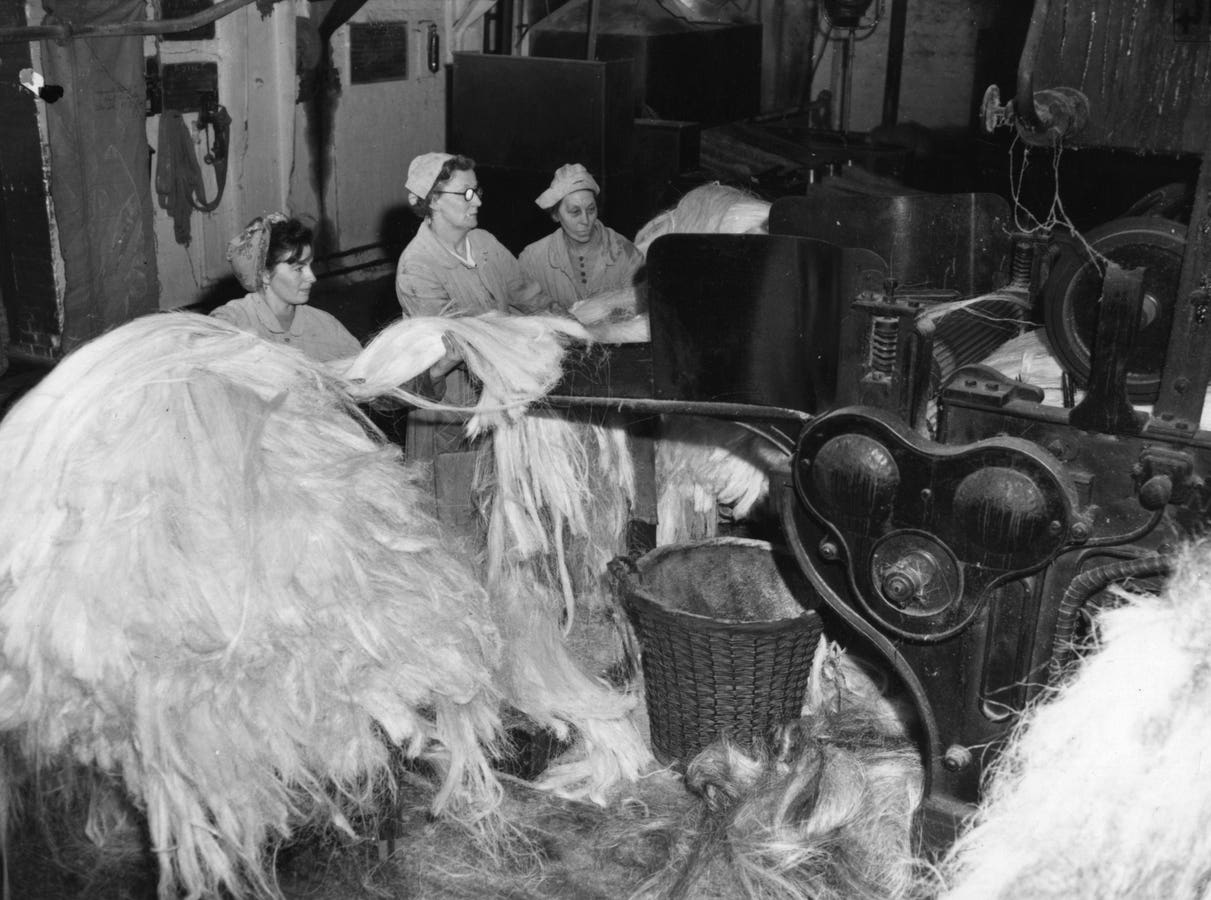In 1941, Henry Ford built a car out of plastic made from hemp, flax, wheat, and spruce pulp. material. It ran on ethanol made from hemp and other agricultural waste. Ford’s bioplastic Model T was was lighter than fiberglass and times stronger than steel.
Popular Mechanics, in its December 1941 issue, reported that “Ford’s experimental model was a step toward the realization of his dream to grow automobiles from soil and reduce greenhouse gases.”
When Ford was building his bio, car greenhouse gasses were already in the public eye and the car started a renewed public conversation on the merits of biomass versus fossil fuel.
Shifting to a carbohydrate economy through hemp
Curbing greenhouse gases and how to shift from a hydrocarbon economy to a carbohydrate economy lies in the use of crops like hemp. In 1992, Irshad Ahmed and David J. Morris wrote The Carbohydrate Economy: Making Chemicals and Industrial Materials with Plant Materials that looked at the potential for biomaterial replacement over the monopoly of petrochemicals.
Industrializing societies were carbohydrate economies 200 years ago. In 1820, Americans used two tons of vegetables for every one ton of minerals. Plants were the primary raw materials in the production of dyes, chemicals, paints, inks, solvents, construction materials and energy.
Because of historical and regulatory factors starting in the 1930s, hemp was sidelined. The Hearst Corporation with investments in the forest products industry opposed hemp paper to protect its tree-based paper production. John D. Rockefeller, an investor in petroleum-based pharmaceuticals and the DuPont family, which introduced nylon, actively campaigned against hemp.
According to Pankaj Srivastava, CEO of Renaissance Corp, hemp has the potential to help the US build a 21st-century industry that produces functionally superior products, meets the needs and demands of modern consumers and protects and restores the environment.
“Since the legalization of hemp cultivation in 2018, the industrial hemp industry is still in its infancy,” said Srivastava. “However, hundreds of forward-thinking entrepreneurs and companies are beginning to embrace hemp as a key ingredient across various industries—both consumer and industrial.”
Srivastava says these companies recognize that hemp offers an eco-friendly and more sustainable alternative to various toxic substances we use daily while also enhancing product performance and functionality.
He added, “Despite this promising start, the industry must address systemic challenges to enable scalable utilization of hemp, which is his company’s mission.”
Green zeitgeist
As a crop, industrial hemp can thrive in infertile soil conditions and can be applied to crop rotation to regenerate soil due to its natural biological ability to cleanse soils.
Srivastava says hemp excels across various applications. “From textiles with improved wear patterns to high-protein and amino acid-rich food products, to lightweight yet strong paneling for cars, planes and trains, its conductivity also makes it ideal for clean energy (electric batteries and biofuels).”
“Our primary milestone is to broaden awareness of hemp’s functionality, aligning it with environmental benefits; continued advancements in material and biological sciences will reveal even more applications, aligning with the green zeitgeist,” said Srivastava.
Industrial transformation
In 2013, QZ reported that there were 25,000 products in nine submarkets—agriculture, textiles, recycling, automotive, furniture, food/nutrition/beverages, paper, construction materials and personal care where industrial hemp could be used. All the products could be made or manufactured from raw materials derived from the industrial hemp plant including fiber, hurds and the hemp seed or grain.
“Key industries utilizing industrial hemp are automotive and aviation, which are using hemp fibers in composite materials for car interiors and lightweight panels in aviation for extra strength and reducing weight,” said Srivastava.
In 1995, Giorgio Armani used hemp in an Emporio Armani collection. BMW has used hemp bio-composites since 2013, Porche’s 718 Cayman GT 4 Club Sport uses hemp and Audi and Volkswagen were one of the original automotive manufacturers that started using hemp in the early 2000s.
And earlier this year in 2024, BMW, Mercedes and Volvo announced they were looking at natural fibers to make cars more sustainable to meet the demand of consumers.
He added, “These industries will be transformed, creating a trillion-dollar opportunity. The more we utilize hemp and other natural ingredients, the better products we will deliver, ultimately improving the health of our planet.”
Srivastava says that by addressing systemic issues in the industry, he hopes to raise consumer awareness around responsible products that also offer superior functionality in daily-use products like clothing, food, housing, and plastics, which will increasingly incorporate hemp.
“We hope to create a focus on research and science that will uncover new applications for hemp, driving demand and cultivation,” said Srivastava. “Hemp’s versatility will prove consistent with functionality and economic viability.”
Addressing pressing challenges
“Industrial hemp, as a crop, offers numerous benefits across various domains and can address some of humanity’s most pressing challenges, including improved agricultural practices and socio-economic impact, food insecurity and sustainable urban development,” said Srivastava.
Agriculture
Hemp addresses the needs of the agricultural community with its multiple uses and simple edaphic practices, which translate into improved soil conditions and better long-term farming results.
“Each part of the hemp plant can be utilized, making it highly efficient. So by improving soil health and providing a sustainable crop, hemp can elevate the socio-economic status of farming communities through job creation and increased agricultural productivity.”
Hemp also requires significantly less water than many traditional crops, up to 70% less water than cotton. “This makes it ideal for regions facing water scarcity,” he adds.
Food Insecurity
Hemp seeds are a highly nutritious food source, rich in protein, essential fatty acids, vitamins and minerals. “By integrating hemp into our agricultural systems, we can enhance food security and provide a sustainable, nutrient-dense crop that thrives in diverse environments,” Srivastava added.
“This is particularly beneficial in regions facing food shortages, as hemp can be grown with fewer resources compared to traditional crops,” he said. “Hemp’s deep root system helps prevent soil erosion, enhancing soil structure and promoting nutrient cycling, which further supports agricultural sustainability and improves crop yields, thus reducing food insecurity.”
Sustainable Urban Development
“Hemp can play a critical role in sustainable urban development,” said Srivastava.
Hempcrete, a building material made from hemp, is highly insulating and fire—and mold-resistant, leading to energy savings of up to 50% compared to conventional buildings.
“This can help create more energy-efficient and resilient urban infrastructure, addressing the challenges of rapid urbanization while reducing the environmental footprint of construction,” said Srivastava. “Hemp’s carbon-sequestering properties also contribute to reducing greenhouse gas emissions, making urban development more environmentally friendly.”
Moving forward
“We’ve started to see more applications of industrial hemp each year as material science advances and sustainable ideologies gain traction,” said Srivastava. “In technology, hemp-based plastics and graphene-like materials are being developed for electronics and batteries, offering sustainable alternatives to traditional materials.”
“Unlike others who are focused on singular aspects such as farming or food, we believe in the broad potential of hemp,” said Srivastava. “Our goal is to raise awareness across sectors and develop the technology, physical, and capital infrastructure needed for any company utilizing hemp to scale effectively.”
Srivastava says that by enabling companies to adopt natural ingredients more easily, Renaissance Park hopes to reboot industrial hemp and create an unstoppable movement.
Read the full article here





